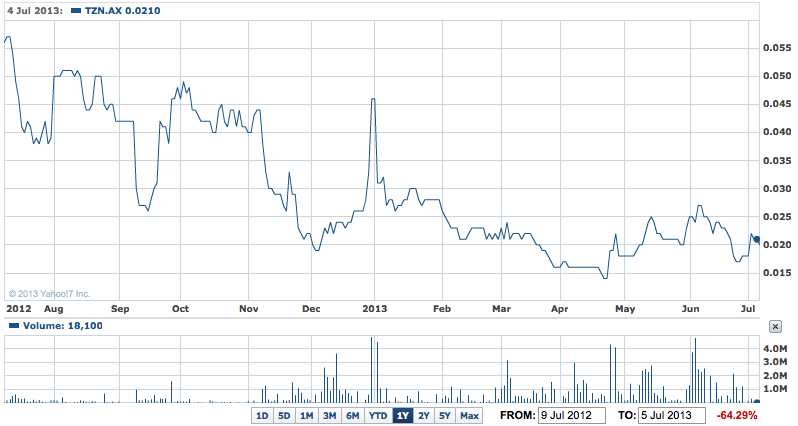Contrasting signals from the resources sector in the last couple of days – on Friday we had news of a small base and precious metal mine in South Australia closing, yesterday we learned that work on a small iron ore mine would start as soon as possible in Western Australia’s Pilbara region.
Atlas Iron (AGO) told the ASX yesterday that it will start work on a new Pilbara iron ore mine after the company’s board approved the $146 million project.
The company said it would start immediate development of its Mt Webber Mine, located about 230 kilometres southeast of Port Headland, with operations expected to start in the December quarter of this year.
The mine is expected to produce about three million tonnes of iron ore a year in its initial phase, with the first exports due in the June quarter of 2014, building to six million tonnes a year in its second stage.
Atlas owns 70% of the Mt Webber project with Altura Mining holding the remaining interest.
Atlas managing director Ken Brinsden said in the statement that the mine’s development will allow the company to reach its target annual production rate of 12 million tonnes by June 2014.
"With our Pardoo, Wodgina and Mount Dove mines in operation, Abydos due to commence in the current quarter and now Mt Webber being developed, Atlas will have delivered five mines in around five years," he said.
And in zinc, Adelaide-based miner Terramin (TZN) says it will shut its Angas zinc mine at the end of September this year because of weak prices and a failure to find any more new higher quality reserves near the mine.
Terramin told the ASX late last week that the mine will close on September 30, with 115 people to be made redundant.
World zinc prices have tumbled by around 12% since the end of 2012 – from around $US2040 a tonne to $US1,805 for the cash settlement price on the London Metal Exchange on Friday night. The slide in gold and sliver prices (along with lead) has added to the pressures on the mine, which has limited reserves (although they are high quality).
"As foreshadowed in previous announcements, the Angas zinc mine will reach the end of its economic life at current metal prices at the end of September. Regrettably, the completion of the mine means redundancies are inevitable.
"The Company is considering a number of options for the use of the mine site, the plant and associated equipment.
"As stated at the Company’s last AGM, the Board believes that the availability of mining infrastructure and treatment plant place the Company in a good position to take advantage of opportunities that present themselves as a result of the current market conditions. The Company continues to identify, review and develop these opportunities.
"Terramin recently completed a deep exploration programme under the main ore body which did not encounter significant mineralisation that could be mined commercially at current commodity prices. The Company plans to continue exploring under and in the proximity of the mine.
"Terramin continues its discussions with the South Australian mine regulator to define the closure plan and mine rehabilitation and will continue to engage with the community during that process," Terramin said.
The Angas Zinc Mine is located, 60km from Adelaide. The 400,000 tonnes per annum (tpa) operation was commissioned in July 2008 at a cost of $71.4 million. Zinc concentrate is trucked 70 km to Port Adelaide for shipment to Asia; lead-copper-gold-silver concentrate is trucked 280 km to the Nyrstar owned Port Pirie lead smelter for further processing within South Australia. Terramin said as at January this year, the mine has 190,000 tonnes of reserves, grassing 11.56% led and zinc, 40 tonnes of gold and 55 ounces of silver per tonne.
Terrmin shares are all but unwanted – and closed at 2c on Friday, up 0.02c the week. Yesterday they dipped 0.3 of a cent to 1.7c. The few investors interested in the company aren’t positive about its future.
The company is all but on a ‘care and maintenance’ basis itself.
TZN 1Y – Terramin losing ground














